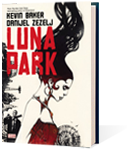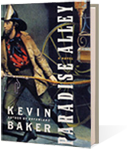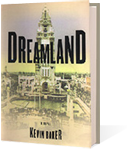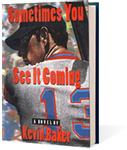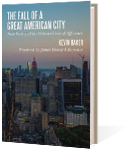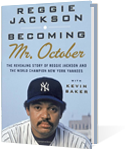It’s opening night at the Newark Bears’ new Riverfront Stadium, the home of the city’s independent minor-league baseball team, and Mayor Sharpe James is in his element. Introduced during the opening ceremonies as ”the greatest cheerleader Newark has ever had,” the Mayor dresses the part, wearing the full purple-and-white uniform of the Bears. Unlike most politicians at a ball game, he stays until the very last out, roving through the stands, shaking hands, actually leading cheers, pressing his hands, palms up, toward the sky, encouraging Newark’s fans to raise the figurative roof.
James is doing more than just rooting for the home team. The Mayor says baseball can revive his city, and in this strange faith he is not alone. Nourished by an almost fetishistic nostalgia, new minor-league ballparks have sprung up all over the country like mushrooms after a summer rain. In New York, a Yankee farm team plans to build a state-of-the-art park to rejuvenate Staten Island’s musty downtown district. Coney Island is also due for a sprinkling of baseball’s magic dust, a proposed stadium for a Mets farm club. Promoters of these new ventures take baseball’s most treacly fantasy — if you build it, they will come — and add to it the promise that by coming, fans will invigorate the tired old neighborhoods, towns and cities trapped in their industrial pasts.
This idea that baseball is imbued with transformative powers has deep roots. The fabled major-league parks built early this century were situated in dense urban districts; the beautiful green fields between the foul lines were a simulacrum, an ”improved” chunk of the American heartland transported to the city — much as the great urban parks of the same period, conceived by America’s first landscape architect, Andrew Jackson Downing, and created by Calvert Vaux and Frederick Olmsted, were artificial plots of wilderness brought to the inner city to ”improve” and assimilate the new urban, immigrant masses. In legend, baseball was an outgrowth of rural America — the mythic field of dreams amid stalks of corn — but in fact, the first recognized game was played at Elysian Fields, in Hoboken, a 19th-century working-class picnic grounds only a few miles from the site where Riverfront Stadium now stands.
Baseball’s mythological power grew as it became an immigrant’s game, dominated in its early decades by Irish players, and later producing stars like Joe DiMaggio, the son of an Italian-born fisherman. As the first big money-making sport, baseball was capable of lifting poor boys out of the slums and turning them into heroes. Their accomplishments were celebrated in stadiums that were among the nation’s great public spaces. Like Grand Central Terminal, the original Penn Station and the dreamy, vanished towers of the amusement-park cities on Coney Island, these ball parks were irresistible attractions to a public whose own private spaces were often claustrophobic, firetrap tenements.
It is more than coincidence that baseball — and particularly minor-league baseball — declined with the rise of the suburbs. The suburbs are all about home, a place where ordinary Americans have nice little greenswards of their own. Television provided further incentive not to travel to the ball park. Minor-league teams died out by the hundreds — dwindling from an all-time high of 448 franchises in 1949 to a mere 130 by 1963 — while big-league clubs moved to sleek, efficient stadiums. Astroturf and vast acres of parking were the hallmarks of the modernized game.
By the early 1990’s, all that began to change again. The new trend, inspired by neotraditional stadiums like Camden Yards, in Baltimore, and Jacobs Field, in Cleveland, represents a shift in the game’s mythology. These new parks don’t simulate Arcadia the way the old ones did; they are instead an idealized form of urbanism, a fragment of our memory of the American industrial city at its peak, and that’s what makes them so attractive to mayors like Sharpe James. An old-time ball park like Riverfront Stadium is more than a link to the past; it approximates the feel of bygone prosperity. Not even Newark’s gracefully appointed performing-arts center — another vaunted symbol of the city’s rebirth — does that.
The fans who pack Riverfront Stadium on opening night are drawn by many things: cheap tickets and diversions (a water-balloon-hitting contest, a booth where they can measure the speed of their own fastballs), not to mention a safe, friendly atmosphere and an abundance of parking. If they enjoy the experience, the thinking goes, maybe they’ll hunt for other places to spend their time and money in Newark. As generators of new jobs and private investment, baseball stadiums generally haven’t justified their enormous expense. (The Newark park cost $29 million, nearly all of it from the public trough.) But their effect on the image of a city is harder to measure.
Riverfront is a handsome park, though the hybrid of urban stylings and suburban conveniences has more than a whiff of Disney about it, like so many reconstructed city attractions these days, and invites an easy cynicism. But then, Central Park was something of an artificial space when it was built, too: a romanticized re-creation of wilderness, denounced by some as no more than an attempt by speculators to boost land values. Its stated purpose, though, was to bring all New Yorkers together in a public place. The crowd at Riverfront is as integrated as you will ever see at a public event in America, and it’s clear that the fans are rooting not just for the Bears but also for Newark. It’s hard not to root with them, at least until the stadium is renamed Continental Airlines Ballpark.

